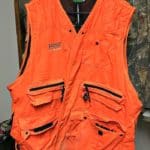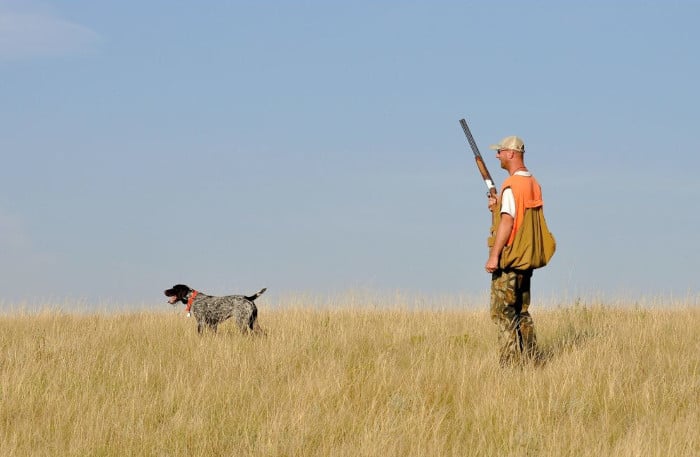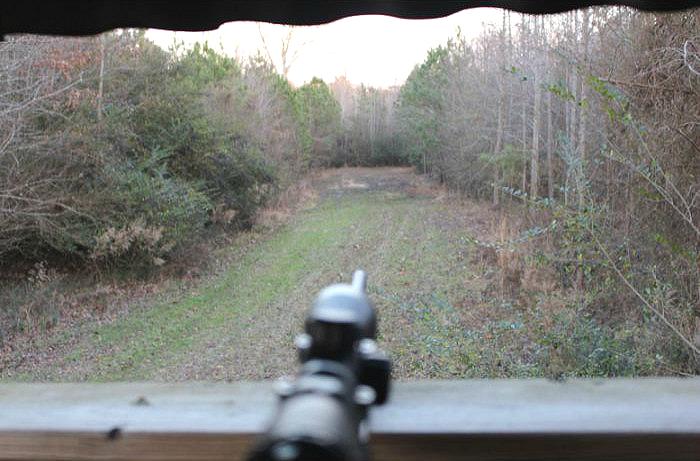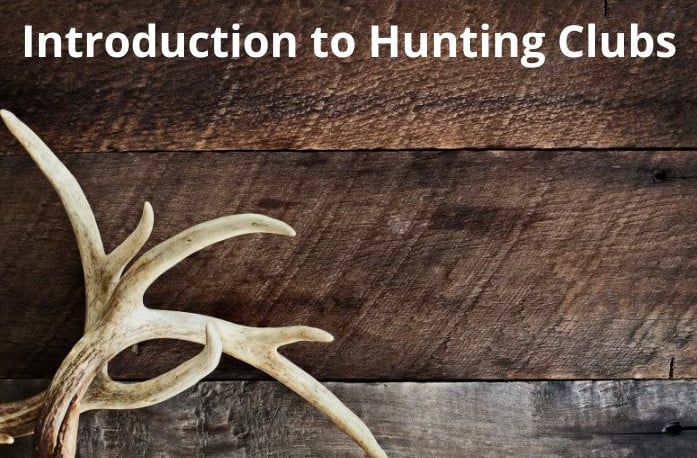Properly planning and preparing for the upcoming hunting season or an upcoming hunting trip is one of the most overlooked aspects of hunting. However, I’m not just talking about packing and planning for a hunt; I’m talking about looking even further ahead.
Here’s a list of areas where I did not plan or prepare appropriately and paid the price during the hunt. Although some of these are a bit embarrassing, I’m sharing them in hopes that you may learn from my mistakes.

Here we go:
Physical Fitness
The area of physical fitness seems to be a sensitive topic for many hunters, and trust me, as a typically out-of-shape hunter myself, I completely understand. However, there are some definite advantages to improving your fitness level before the hunting season starts. This is especially true if the hunting involves extended walking or hiking.
I can speak from experience on this issue because I’ve failed to prepare physically on more than one occasion properly. You’d think I would have learned after the first experiences, but apparently, I’m quite hard-headed.)
Here’s a quick overview of my two experiences:
Pheasant Hunt in the Midwest
As an upland bird hunter from the southern U.S., I always dreamed of going on a classic pheasant hunt in the Midwest. And by classic, I mean the pheasant hunts you see on the various outdoor channels.
Several years ago, I finally broke down and booked a pheasant hunt in Kansas. Although it wasn’t my first trip to Kansas, it was my first-time pheasant hunting wild pheasants.
At that time, I was leading a somewhat sedentary lifestyle sitting behind a desk. I wasn’t really exercising at all, so my fitness level was probably well below an average man my age. To make matters worse, I did not plan well and failed to get into better shape before the hunt.
Pheasant hunting can involve some serious walking, and, quite frankly, I wasn’t prepared for it. It was a three-day hunt, and I was worn down by the end of the first day. By the end of the second day, I could barely walk because I simply wasn’t accustomed to that much walking. So on the 3rd day, I only hunted in the morning and sat out the afternoon hunt.
While the hunting was good with plenty of birds, I didn’t enjoy it nearly as much as I could have. That was a mistake I promised that I wouldn’t make again (but I did).
Grouse Hunt in N.C. Mountains
A few years after the pheasant hunt, I jumped on the opportunity to go grouse hunting in the North Carolina mountains. Since I live in N.C., I’ve been to the mountains several times but had not hunted the area.
This was my first-time grouse hunting, so I wasn’t exactly sure what to expect. At the time, I was in slightly better physical shape than the Kansas Pheasant hunt but didn’t spend any time preparing for the grouse hunt.
It didn’t take me long to figure out that walking down the hills and valleys of the mountains isn’t really that bad. However, walking back up those hills is an entirely different story. No man wants to look weak, or out of shape, so I kept walking up those hills and valleys, fully expecting to have either a stroke or heart attack. Finally, I had to take breaks to rest and catch my breath.
While I enjoyed the hunting experience, it was far more grueling than expected because I was physically unprepared. So my hat goes off to you men and women who hunt in those mountainous regions because you have to be in some seriously good shape to do that day in and day out.
I’m not in world-class shape now, but I make it a point to be in better physical condition, especially involving hunting trips that I know will test my fitness.
Depending on how much time I have before the hunt or before the season, I’ll usually start working on my cardio and conditioning at least 3-4 weeks before. So please don’t wait until two days before the hunt to start a fitness program, as it won’t help.
Another factor to consider is the climate that you are hunting. For example, if you live in Florida but booked a winter hunt in Alaska, you need to take that into consideration from a fitness standpoint.
Also, think about the elevation if you are planning on hunting at a location with a higher elevation. I never bought the “thinner air at higher altitude” until I did a Mule Deer hunt in Colorado. Although I was in much better shape physically, I found the air to be thinner at the elevation where we were hunting. I hadn’t planned on that, so it was tougher to breathe than I expected.

Gear Preparation (or lack of)
Over the years, I’ve also made some tactical errors with my hunting gear. Here are a few stories about those and my takeaways from those experiences:
Breaking in Footwear
Nearly every hunt that you’ll take will probably involve you wearing some kind of specific footwear, including hunting boots, snake boots, waders, etc.
If you buy a new pair of boots, waders, etc., before your hunt or before the upcoming season, make absolutely sure that you break them in BEFORE the hunt.
This is another mistake that I made, although I certainly should have known better. I picked up a new pair of waders for an upcoming duck hunt. Even though I knew better, I didn’t bother to spend any time or effort breaking in the boots/waders.
As a result, when the duck hunt came around, I was miserable as I had huge blisters on my feet in a matter of hours. The second day was even worse as my feet started bleeding. It was a shame as I paid good money for that hunt and couldn’t enjoy it. I know it sounds lame but take the time to break your footwear if it’s new.
I learned from this experience and always break in footwear well before the hunt.
Practicing with Your Gear
I know this sounds very simple, but it’s commonly overlooked. Although it’s only really happened to me once, I’ve seen it happen to others several times.
My situation involved a brand-new shotgun that I bought for dove hunting. I usually shoot a 12 gauge for most wing shooting, but I’d recently had rotator cuff surgery on my shooting shoulder. So, at the last minute, I opted to buy a semi-auto 20 gauge shotgun made by a reputable brand (which I won’t name).
Due to the last-minute purchase, I didn’t have time to take the shotgun to the skeet or trap range to get used to it. So when legal shooting time rolls around on the opening day of the N.C. dove season, I quickly learn that this particular shotgun doesn’t like low brass 7/8 ounce dove shot very well and won’t properly cycle. To make matters worse, I did not bring a backup shotgun. Luckily a buddy did, and he was kind enough to loan me one of his 20 gauges for the remainder of the day.
Lesson learned: shoot the shotgun to test function and performance BEFORE opening day.
One of my good friends booked a relatively expensive hunt for mule deer in Canada (I passed on this hunt as it was too pricey for my tastes).
He picked up some shooting sticks in the event that he might be faced with a long-range shot. Unfortunately, while he practiced religiously from the bench, he never took the time to practice offhand using the sticks.
During the hunt, he was presented with a reasonably long range shot (just over 400 yards) at a very nice muley. Unfortunately, since he hadn’t practiced with the sticks in an offhand position, he missed an excellent opportunity to bag a trophy muley. Although he did bag a nice one later, it wasn’t near as nice as the one he missed previously. Had he taken the time to practice with the sticks, he might have hit that shot.

Again, it sounds like common sense stuff, but it can and does happen. Take the time to practice with the gear that you will be using.
- If you are using a rifle, don’t just practice off the bench. Practice a little offhand, then with s shooting bag and any shooting sticks.
- Spend some time shooting in the specific clothes you will wear during the hunt.
- If you bought a new rifle scope, get familiar with the operational controls before the season starts.
- Practice with shooting sticks, monopods, rangefinders, etc., that you will use during the hunt.
This way, you’ll be better prepared if the hunting opportunity of a lifetime presents itself.
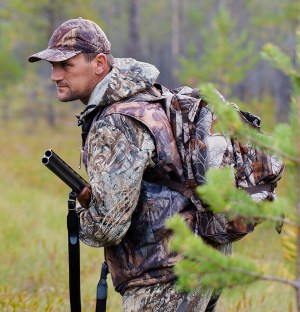
Born and raised in the North Carolina foothills, Andy was introduced to the outdoors at a very young age. Like most beginning hunters, he started out hunting small game like rabbits and squirrels, then graduated to larger species like Whitetail Deer. Although he’s an avid deer and turkey hunter, he still enjoys hunting small game as well. Andy has worked in the hunting and fishing industry for nearly 25 years.


